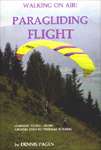 |
 |
 |
 |

This page will take a look at the various safety aspects associated with the sport. It will also discuss the equipment used in paragliding. Navigation to the various sections can be done by clicking on the topics listed in the contents below.
| SOME KEY COMPONENTS. | |
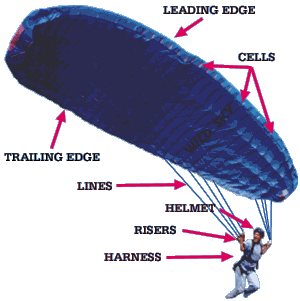
|
|
From the outset it should be noted that the majority of injuries occuring in paragliding are a direct result of pilot error. By pilot error, I mean an error in judgement.
Over confidence is another common fault that creeps in once a pilot has mastered the basics. A word of advice from the Scientist of the Sky: "Don't ever adopt the attitude that you know all there is to know about paragliding. Always be prepared to listen to good advice".
I believe that it is essential for a pilot to continuously seek new knowledge and skills to improve their flying performance. One way of doing this is to try and associate with other pilots who you know offer serious, constructive input regarding your flying and flying in general. It's this constant feedback that allows us to grow with the sport and expand our skills as competent pilots. Practice and experience are the key issues we need to remember and not our own egos!
Bear in mind that the sport of paragliding is largely an individualistic sport. This means that when it comes to safety it is each pilot's responsibility to ensure that they adhere to the rules. Here are a few of the essential rules to follow:
- Never fly alone (although the Skyscientist has been seen - on occasion - floating around, unaccompanied, at cloudbase).
- Never fly when overly tired.
- Never fly under the influence of drugs (including alcohol).
- Always wear a helmet.
- Always take off and land into the wind (this is not always possible but will make your life that much easier).
- The wind complicates all flying - the stronger the wind, the greater the complications.
- Judgement takes the longest time to acquire of any aspect in aviation (recognize and respect this).
- Always fly one step below your limits.
- Look at entire canopy and lines for tears, punctures or abrasions. Check for pulled or missing stitching. Look under the canopy and pay special attention to the top surface.
- Check the canopy for sand, gravel or small rocks. Even a small amount of dirt in the canopy can affect its flying capabilities.
- Check each line for continuity, tangles and abrasions. Clear all lines from each other and foreign objects like sticks.
- Check the line-to-riser connections.
- Ensure your brake toggles are free from tangles.
- Check the harness for abrasions and pulled stitching.
Your flying equipment. |

|
| ESSENTIAL EQUIPMENT REQUIRED FOR PARAGLIDING. | |
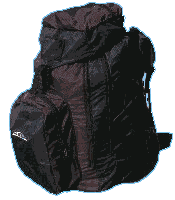
|
The paragliding bag is the home of all your flying equipment. The bag resembles a hiking bag and is usually padded around the waist and shoulders for support during those "big" walk-outs. It houses your glider, harness, helmet and usually has enough room for your flight-suit, boots, electronic equipment and other extras. |
 
|
Left: The harness is your "flying chair" and provides enough space to pack your glider bag away before launching. Some space is usually available for extra equipment like cameras and waterbottles. Right: The back protection is situated inside the harness behind the pilot's back. It offers vital back protection to the pilot should there be an accident. |
 
|
Examples of electronic equipment used by paragliding pilots: Left: This is a 'GPS' (Global Positioning System) used by the pilot to establish, amongst other things his or her ground speed. Center: This is an Alti-variometer. It provides both audio and visual feedback to the pilot about his or her altitude, ascent or descent rates. Right: This is a Radio used for in-flight or ground-based communication. |

|
A good pair of boots for ankle support and those "big" walk-outs. |
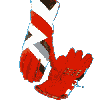 |
A good pair of gloves offers the pilot the protection from the cold and wind chill factor. They also allow the pilot to handle the glider lines with little or no discomfort during certain advanced manoeuvres. |
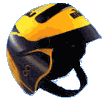
|
A Helmet is an essential item. The helmet shown here is not a full-face helmet and does not offer protection to the face of the pilot. |
| A Flight Logbook is also an essential item. It contains useful information (provided it is updated) that a pilot can use in monitoring his or her own progress. Take a look at my "scrolling logbook" to see what kind of information I have in my flight logbook. | |
Handy links: 1. This is an equipment and sales link which offers a comprehensive list of items available. 2. Find out more about what gear to wear. This link also handles on-line orders. |
|
- Store in a cool, dry place (not in the back of the car).
- Wash only with fresh water.
- If exposed to salt water, wash in fresh water immediately and dry thoroughly.
- Allow air to circulate when drying and dry in shade only.
- Exposure to sun shortens your glider's lifespan. Pack it away when not in use.
- Do not use soap, sprays or other cleaners on your canopy.
 |
 |
 |
 |
